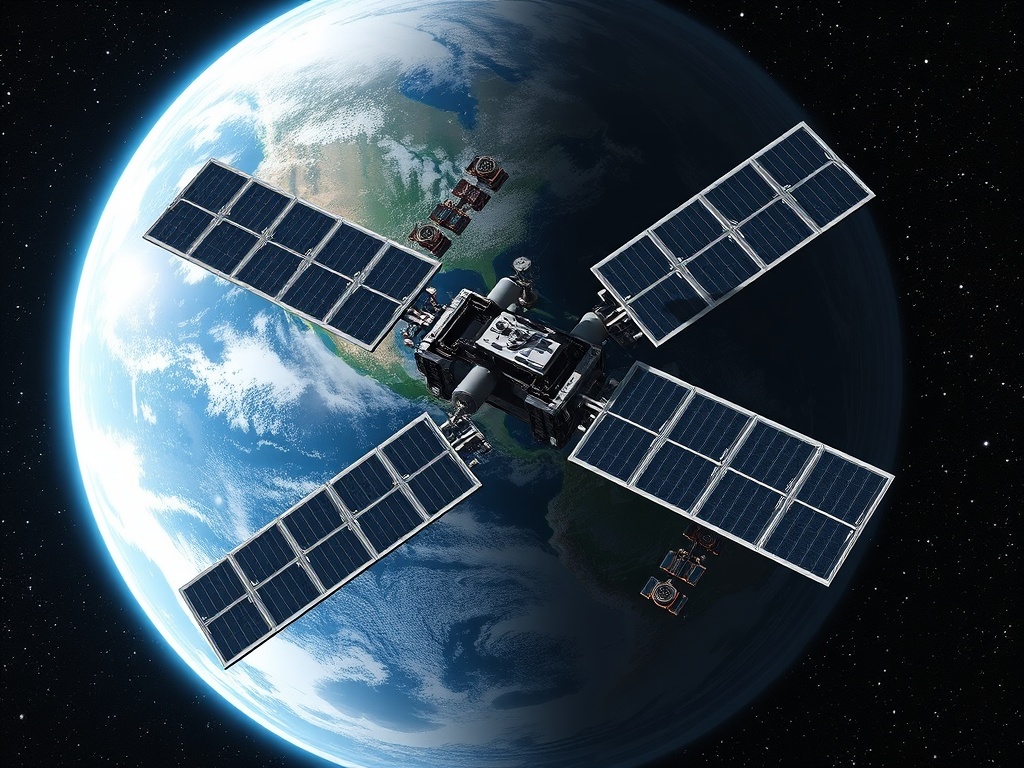
Introduction
In an increasingly digital world, reliable internet access is essential for both personal and professional activities. For those living in remote or rural areas, satellite internet often emerges as a viable option when traditional broadband services are unavailable. However, potential users frequently grapple with a critical question: Is satellite internet worth the investment? This article delves into the costs, benefits, and drawbacks of satellite internet to help you make an informed decision.
Understanding Satellite Internet
Satellite internet connects users to the internet via satellites orbiting the Earth. A satellite dish installed at the user’s location communicates with these satellites, which then relay data to and from ground stations. This technology enables internet access in areas where terrestrial options, such as cable or fiber-optic connections, are not feasible.
How Satellite Internet Works
- Signal Transmission: When you send a request (like loading a webpage), your data travels from your device to the satellite dish.
- Satellite Relay: The satellite, positioned in geostationary orbit approximately 22,000 miles above the Earth, receives the signal and transmits it to a ground station.
- Data Processing: The ground station processes the request and sends the data back to the satellite.
- Delivery: Finally, the satellite beams the data back to your dish, which then relays it to your device.
Understanding this process is important for grasping the inherent latency challenges associated with satellite internet.
Cost Breakdown
1. Equipment Costs
The initial setup for satellite internet typically involves purchasing or leasing a satellite dish, modem, and any installation services. Equipment costs can range from $100 to $500, depending on the provider and the quality of the equipment. Some providers offer promotional packages that include free or discounted equipment with a contract commitment.
2. Monthly Service Fees
Monthly subscription costs for satellite internet services can vary significantly based on the provider and the chosen plan. Generally, prices range from $50 to $150 per month. Factors influencing costs include:
- Speeds: Higher speeds often come with higher price tags. Basic plans may offer speeds around 12 Mbps, while premium plans can exceed 100 Mbps.
- Data Caps: Many satellite providers impose data limits, which can lead to additional charges if exceeded. Plans with higher data caps or unlimited data typically cost more.
3. Installation Fees
Installation fees can vary based on the provider and location. Some companies charge a flat fee (around $100 to $200), while others may include installation in the service package. It’s important to inquire about installation costs upfront to avoid surprises.
4. Additional Costs
Users should also consider potential additional costs, such as:
- Early Termination Fees: If you sign a contract and decide to cancel early, you may incur fees that can range from $100 to $400.
- Service and Maintenance: While satellite services typically include technical support, some companies charge for on-site repairs or maintenance. Understanding the terms of service is crucial to avoid unexpected expenses.
Benefits of Satellite Internet
1. Accessibility
One of the primary advantages of satellite internet is its availability in remote areas where traditional internet services are lacking. For rural communities and underserved regions, satellite internet can provide essential connectivity. This accessibility can enhance quality of life, enabling residents to engage in online education, remote work, and telehealth services.
2. High Speeds
Modern satellite technology has improved significantly, with many providers offering speeds comparable to DSL or cable services. This enhancement allows users to stream videos, engage in video calls, and participate in online gaming with less latency than in the past. Some providers now offer plans with speeds up to 150 Mbps, making satellite internet a more competitive option.
3. Nationwide Coverage
Satellite internet services are available across vast geographical areas, ensuring that users in remote locations can access the internet without relying on local infrastructure. This feature is particularly beneficial for emergency services and disaster response teams operating in isolated areas.
4. Flexibility
Satellite internet can be a flexible solution for users who frequently relocate or travel. Many providers offer portable satellite internet options, allowing users to stay connected while on the go. This flexibility is especially advantageous for RV owners, campers, and field workers.
Drawbacks of Satellite Internet
1. Latency Issues
Despite advancements in technology, satellite internet is still affected by latency, which can result in slower response times. This delay occurs because data must travel to the satellite and back to Earth. For activities requiring real-time interaction, such as gaming or live video streaming, latency can be a significant drawback. Users can experience lag, making activities like online gaming frustrating.
2. Data Caps
Many satellite internet plans come with data limits, which can be restrictive for heavy users. Exceeding these limits often results in throttled speeds or additional charges, making it essential for users to monitor their data usage. In a world increasingly reliant on video streaming and online content consumption, data caps can severely limit user experience.
3. Weather Sensitivity
Satellite signals can be disrupted by severe weather conditions, such as heavy rain or snow. This sensitivity can lead to temporary outages, impacting reliability during critical times. Users in regions prone to inclement weather may find satellite internet unreliable during storms.
4. Cost Comparison with Alternatives
While satellite internet serves a crucial role in providing connectivity, potential users should compare its costs and performance with other available options, such as DSL, cable, or fixed wireless internet. In some cases, local service providers may offer competitive pricing and better performance. Conducting a thorough cost-benefit analysis can help determine the best option for your needs.
5. Limited Customer Support
Some satellite internet providers have been criticized for their customer service. Users may face long wait times for technical support or difficulty resolving issues. This experience can be frustrating, especially for users who rely heavily on their internet connection for work or personal needs.
Real-World Applications of Satellite Internet
1. Remote Work
As remote work becomes more common, satellite internet provides a solution for employees in areas without traditional broadband access. It enables telecommuting, allowing workers to participate in video conferences, access cloud services, and stay connected with colleagues.
2. Education
Students in rural areas can benefit from satellite internet, gaining access to online learning resources and virtual classrooms. This connectivity helps bridge the educational divide, providing opportunities for those who might otherwise lack access to quality education.
3. Emergency Services
Emergency responders often operate in remote areas where traditional communication infrastructure is lacking. Satellite internet can provide crucial connectivity for coordination and communication during disasters, ensuring that aid reaches those in need.
4. Agriculture
Farmers in rural regions can utilize satellite internet for precision agriculture, enabling them to monitor crop conditions, manage equipment, and access market information. This technology can optimize yields and improve overall efficiency.
Conclusion
Determining whether satellite internet is worth the investment depends on individual needs and circumstances. For those in remote areas with limited options, satellite internet can provide essential connectivity, despite its higher costs and latency issues. However, for users in urban or suburban settings, exploring terrestrial options may yield better performance and value.
Careful consideration of equipment costs, monthly fees, and potential drawbacks is vital in making an informed decision. As technology continues to evolve, users should stay informed about new developments in satellite internet services, as improvements may enhance affordability and performance in the future.
Ultimately, the value of satellite internet lies in its ability to bridge the connectivity gap for millions of users across the globe. While it may not be the ideal solution for everyone, it remains a critical lifeline for those in areas where traditional internet services are simply not an option.






